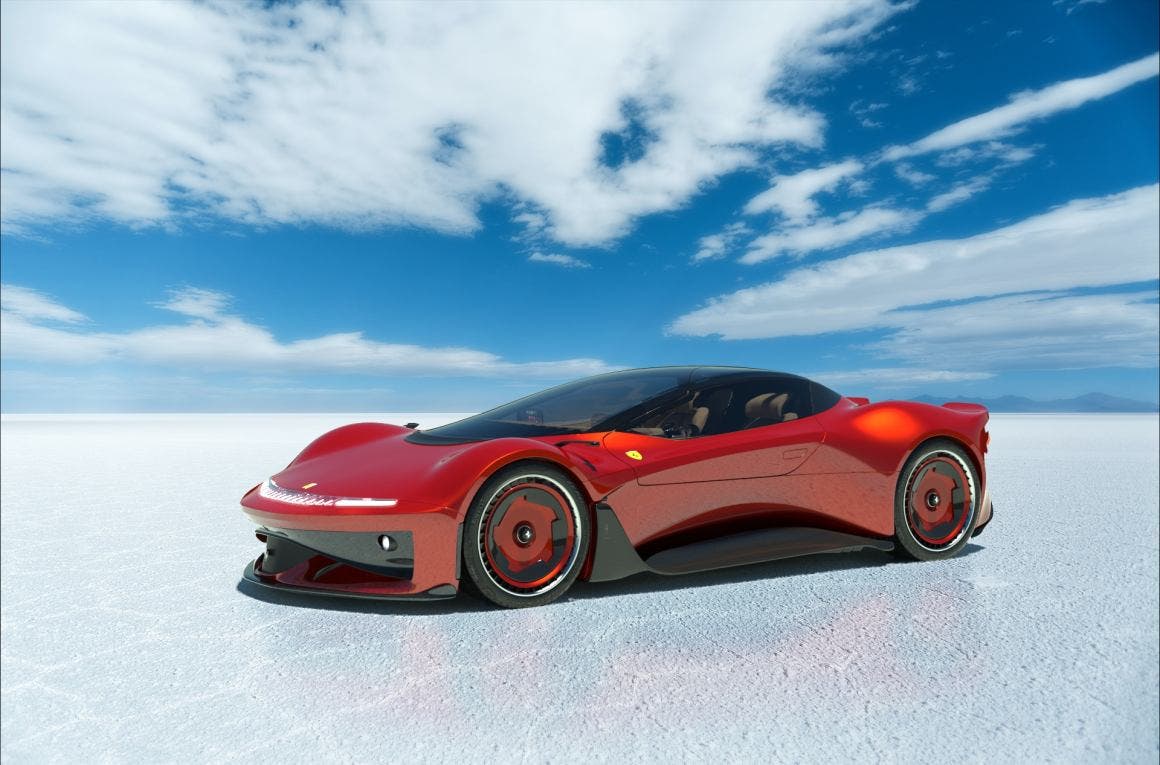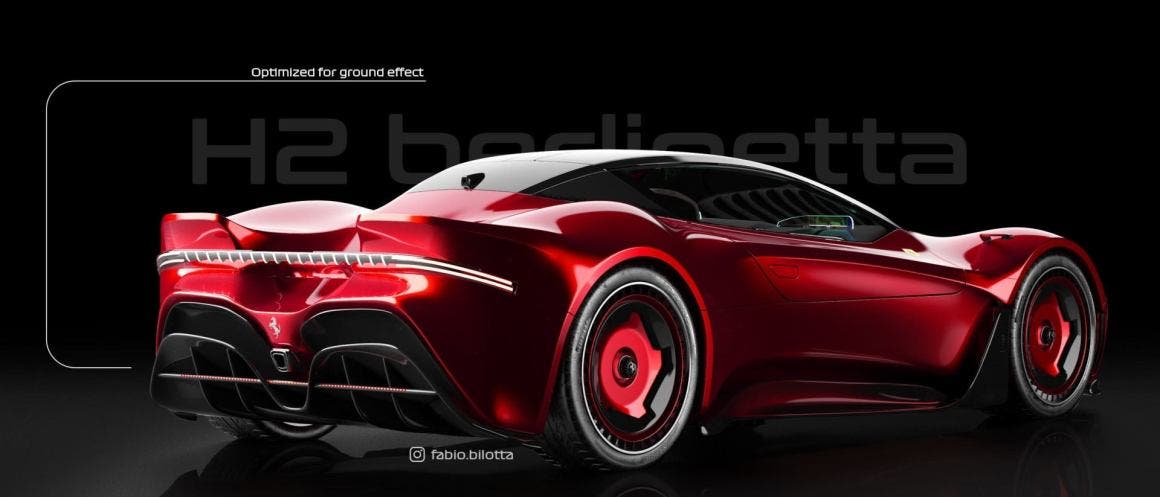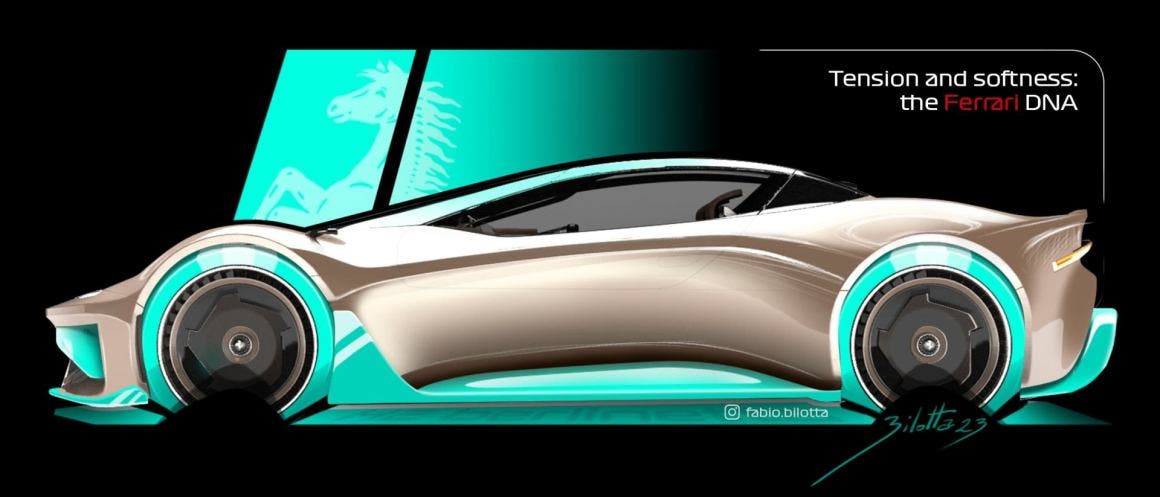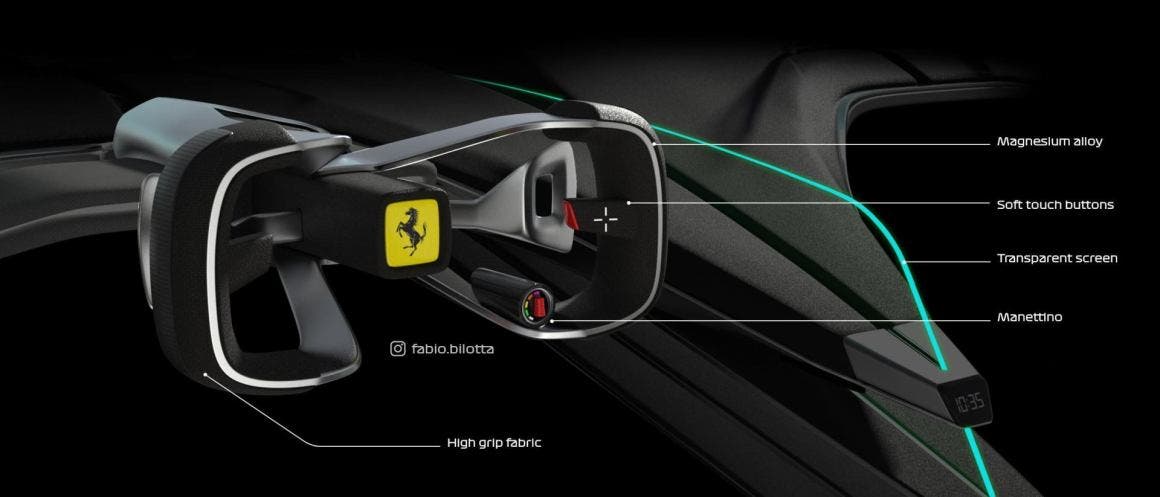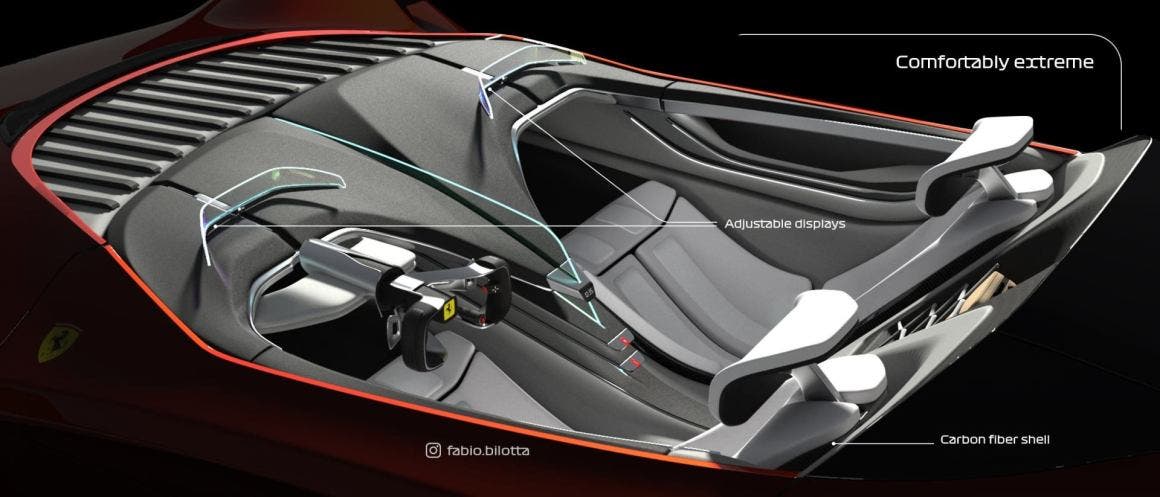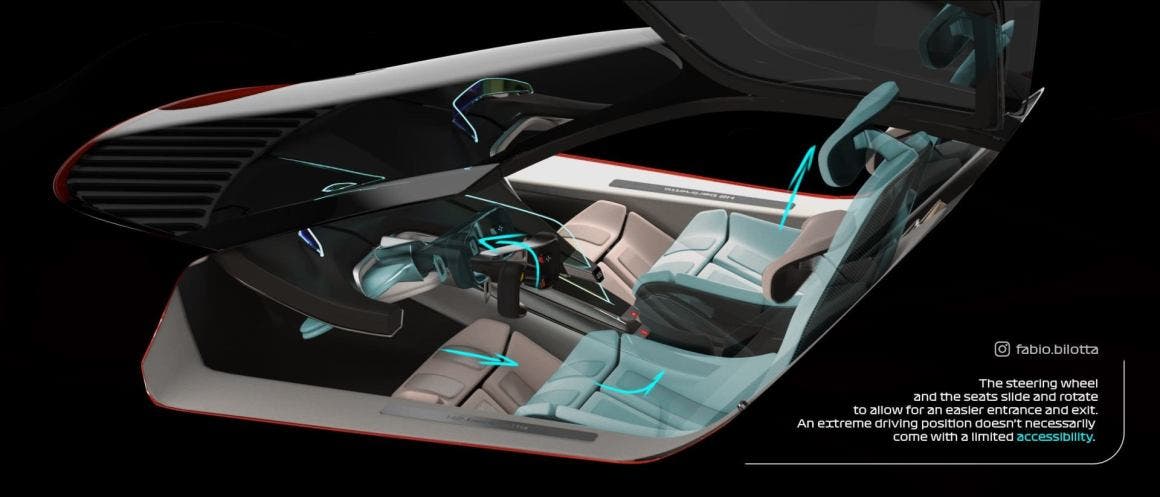Designer Fabio Bilotta has unveiled his vision for a future successor to the Ferrari 812 Superfast, dubbed the Ferrari H2 Berlinetta. The concept car is a hydrogen-powered supercar that embraces zero-emission technology while staying true to Ferrari’s heritage and DNA. Unlike traditional FCEV (Fuel Cell) vehicles, the Ferrari H2 Berlinetta uses hydrogen as a fuel in an internal combustion engine similar to those currently used by Ferrari. This approach allows the car to maintain the exhilarating performance and sound that are synonymous with the brand.
Ferrari H2 Berlinetta: what the possible successor to the 812 Superfast could look like
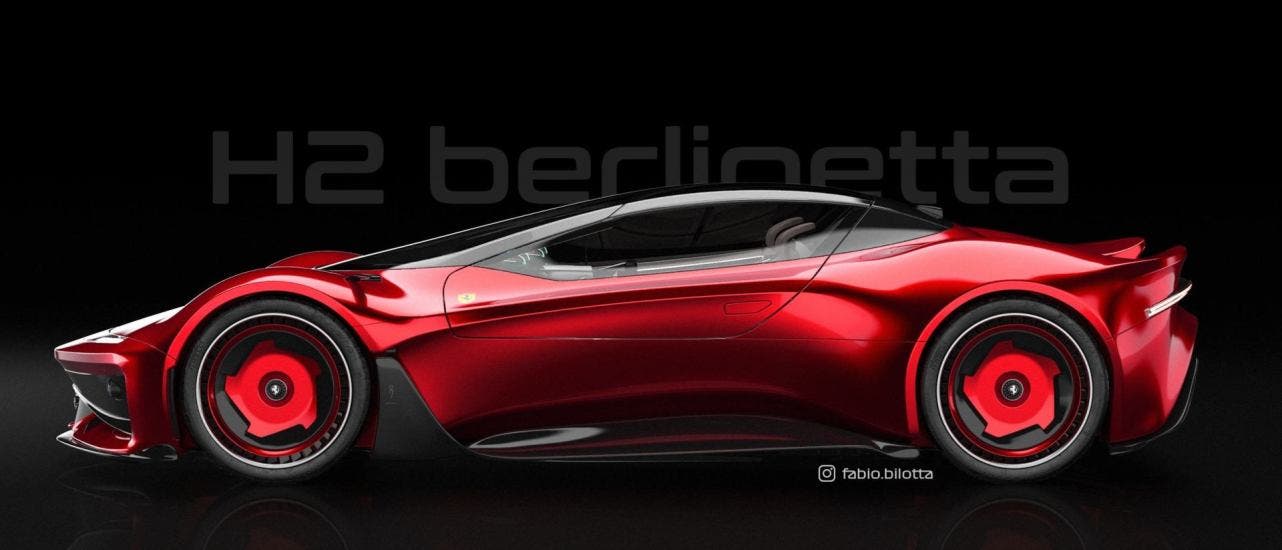
Bilotta‘s design for the H2 Berlinetta emphasizes clean surfaces, volume, and proportions. The absence of excessive graphic elements creates a manifesto of essential aesthetics that is both sporty and elegant. The car’s aerodynamic design channels airflow from the front to the rear, minimizing drag.
The front end features four main openings: two for cooling the radiators and brakes, and two vertical ones that create a bubble around the front wheels to reduce aerodynamic interference. Carbon fiber fins then collect the airflow and direct it to the rear of the car. The interior of the Ferrari H2 Berlinetta echoes the minimalist style of the exterior. The driving position is inspired by Formula 1, but with ergonomic and technological features that ensure comfort and usability.
Physical buttons are still present, albeit in reduced numbers, on the center console for launch control and ABS, and on the cloche steering wheel, which features the classic manettino and menu navigation controls. The steering wheel and seats both move to facilitate entry and exit from the cockpit.
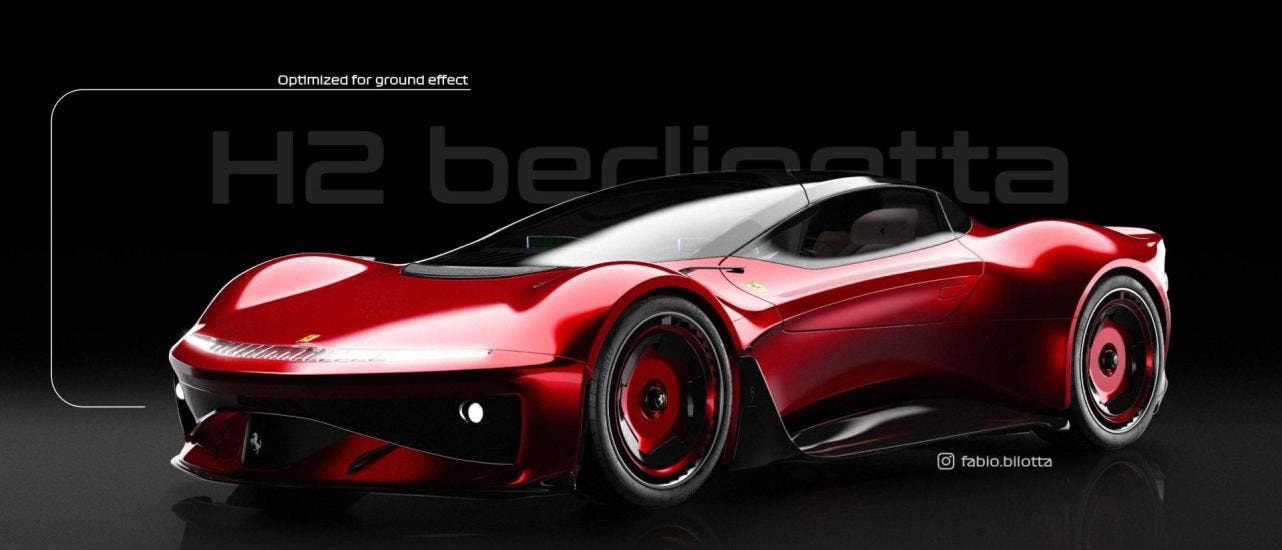
In short, this is not the usual aesthetic rendering but a real detailed study, like the recently published one of the electric Ferrari Testarossa, in which a 3D model was even created to make everything more realistic.
